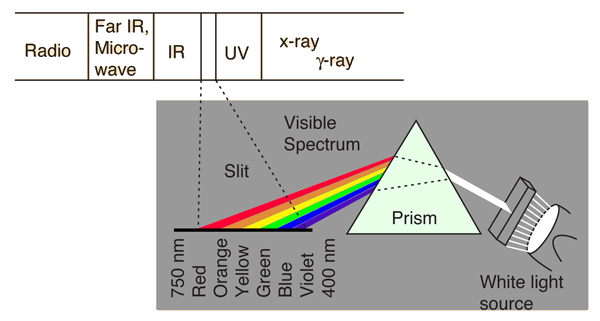Visible Light

The narrow visible part of the electromagnetic spectrum corresponds to the wavelengths near the maximum of the Sun's radiation curve. In interactions with matter, visible light primarily acts to elevate electrons to higher energy levels.
White light may be separated into its spectral colors by dispersion in a prism.

| Frequencies: 4 - 7.5 x 1014 Hz |
| Wavelengths: 750 - 400 nm |
| Quantum energies: 1.65 - 3.1 eV |
Electromagnetic spectrum
Some sources express the wavelengths in Angstrom units (1 Angstrom = 10-10m). An Angstrom unit = 0.1nm, so the visible light wavelengths would be 7500-4000 Angstroms.
| Spectral colors | Color vision | Characteristics of color |
| HyperPhysics*****Electricity and Magnetism | R Nave |